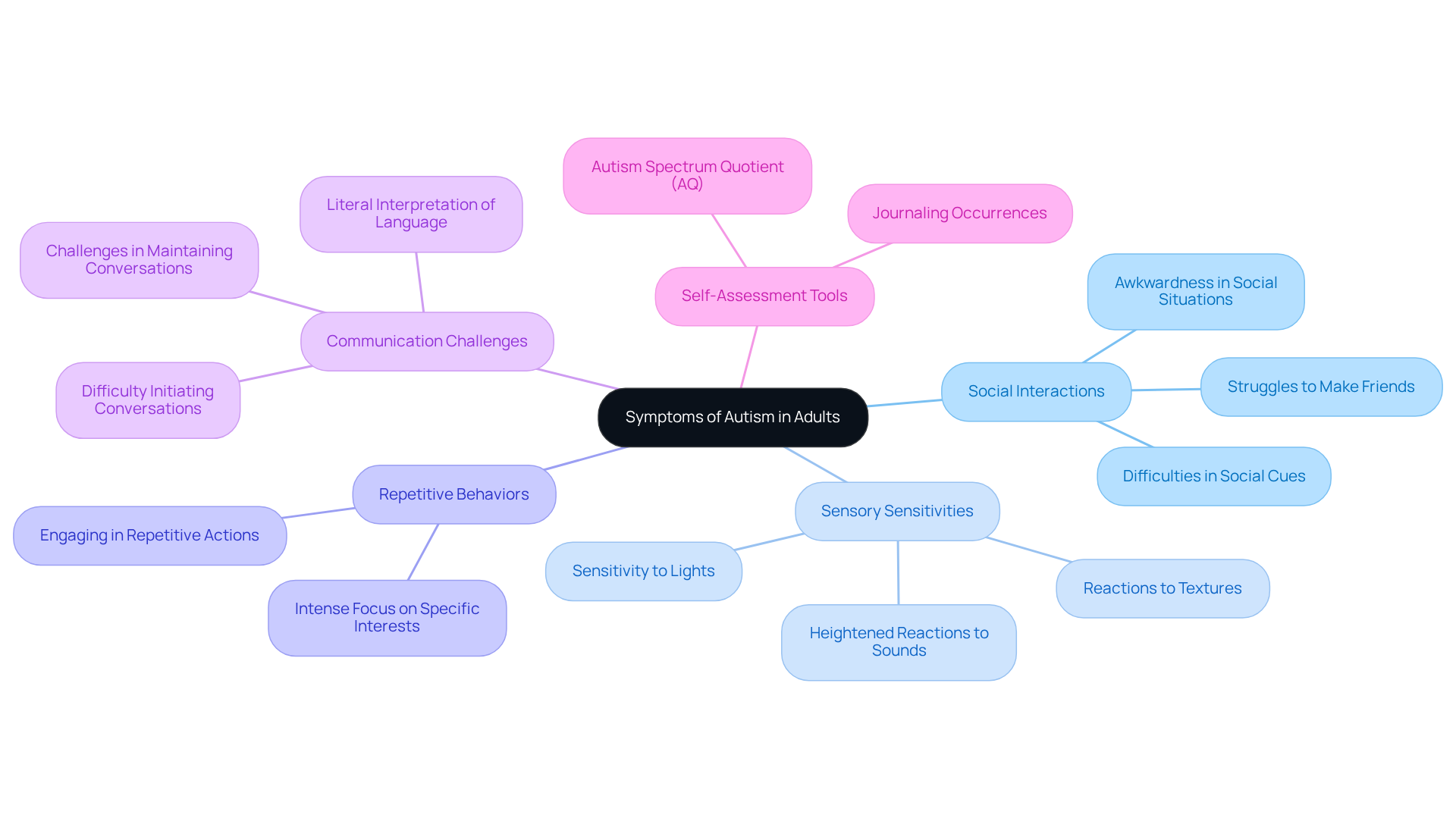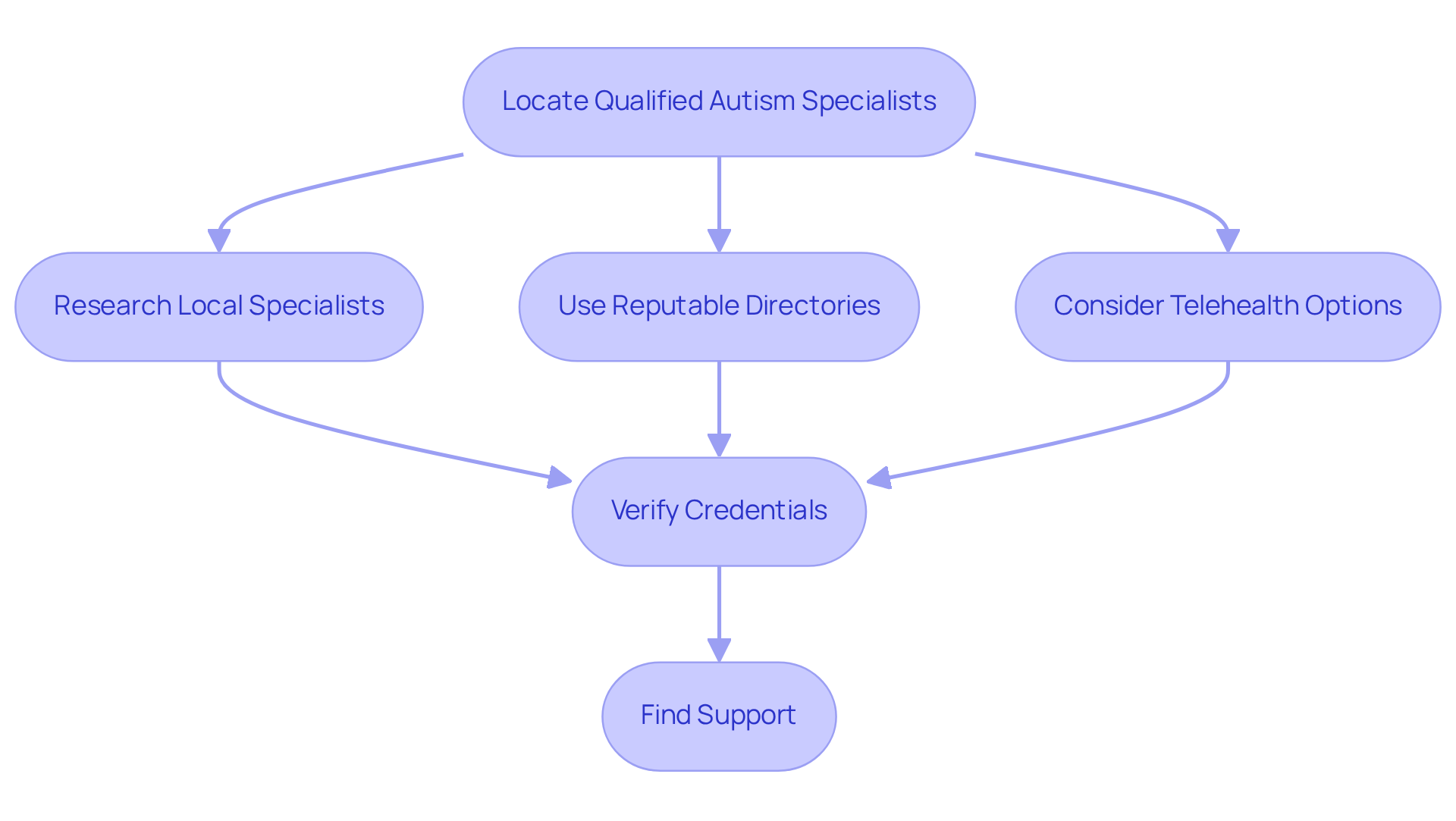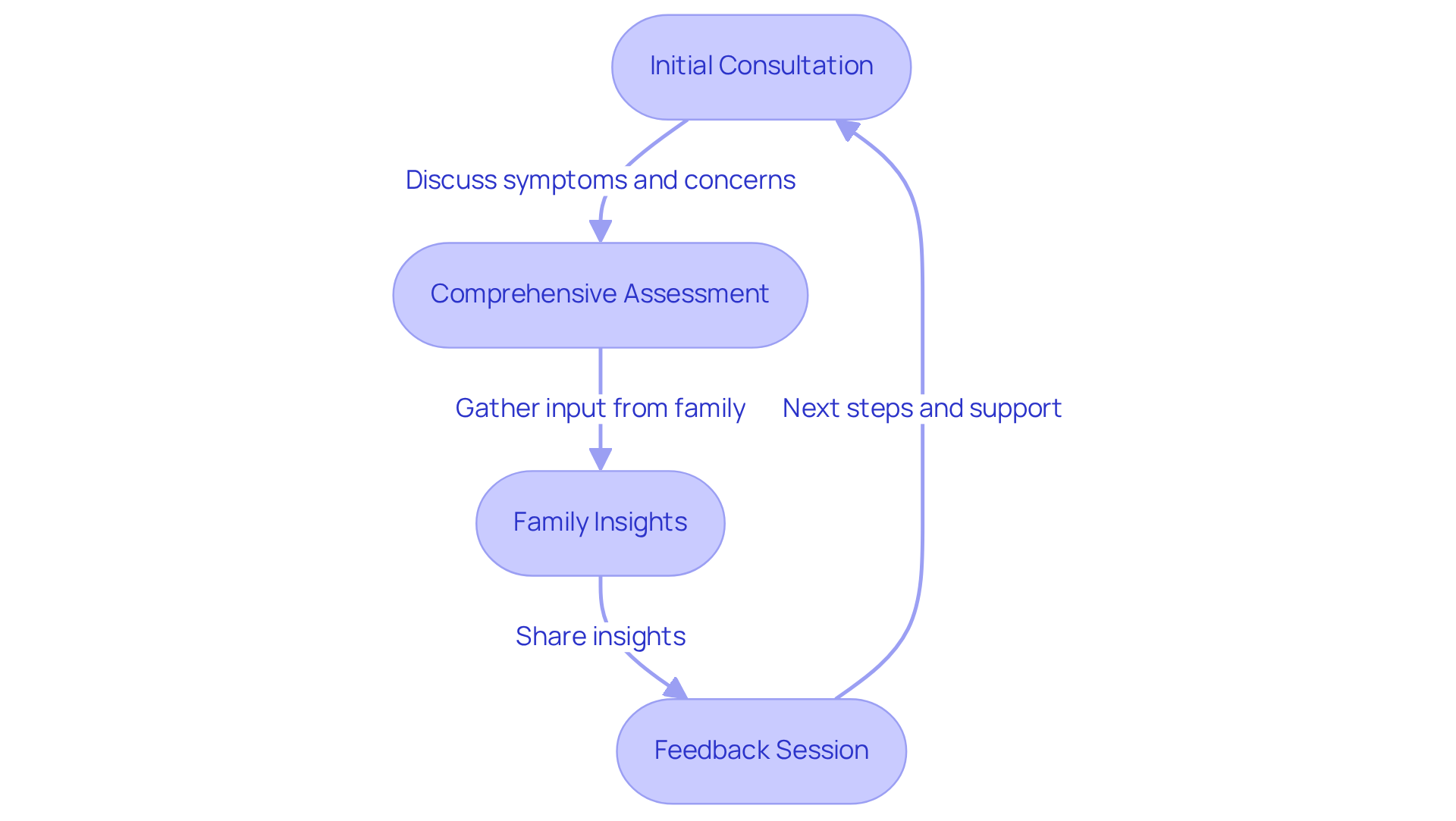Overview
Navigating the journey to an autism diagnosis as an adult can be both challenging and enlightening. It begins with a process that encourages self-reflection on symptoms, consultations with qualified specialists, and thorough assessments. Identifying the signs of autism is the first step, and it’s essential to locate specialists who understand your unique experiences. Understanding the diagnostic process can alleviate some anxiety, as it often involves multiple steps and considerations.
Recognizing the benefits of a diagnosis is crucial. It not only validates your experiences but also opens doors to support and resources that can enhance your quality of life. Throughout this journey, self-awareness and professional support play vital roles in achieving an accurate diagnosis. Remember, you are not alone in this; many have walked this path and found clarity and understanding. We encourage you to share your experiences and seek out the support you need. Together, we can foster a community of understanding and compassion.
Introduction
Understanding the nuances of adult autism can be a complex journey, often clouded by misconceptions and uncertainty. Many individuals find themselves grappling with the signs and navigating the diagnostic process, which can feel overwhelming. However, this journey also holds the potential for profound personal growth and support.
So, what steps should adults take to ensure they receive an accurate diagnosis? How can this pivotal moment reshape their understanding of themselves and their interactions with the world? These questions are crucial as they can lead to a deeper awareness and connection with one’s own experiences.
As we explore this topic together, let’s acknowledge the challenges and celebrate the possibilities that come with understanding adult autism. Your journey matters, and there is support available to help you along the way.
Identify Symptoms of Autism in Adults
Reflecting on personal experiences can be an important step in understanding how do adults get diagnosed with autism. Consider how certain behaviors may align with how do adults get diagnosed with autism. You might notice difficulties in social interactions or challenges in understanding social cues, which can lead to questions about how do adults get diagnosed with autism. Sensory sensitivities, such as heightened reactions to sounds, lights, or textures, can also play a role. Additionally, you may find yourself engaging in repetitive behaviors or having an intense focus on specific interests. Communication challenges, like initiating or maintaining conversations, can lead to feelings of anxiety in social situations.
To gain a clearer picture of your experiences and learn how do adults get diagnosed with autism, utilize self-assessment tools like the Autism Spectrum Quotient (AQ). These tools can help gauge potential traits that resonate with you. Furthermore, maintaining a journal of occurrences that suggest traits of the condition can be invaluable. This record can serve as a meaningful resource to discuss with a professional later, especially in understanding how do adults get diagnosed with autism. Remember, seeking support is a courageous step toward clarity and connection.

Locate Qualified Autism Specialists
Finding the right support for adult autism can feel overwhelming, but you’re not alone in this journey. Start by researching local autism specialists who can provide the guidance you need. Look for psychologists and psychiatrists who have experience working with adults on the autism spectrum, as well as neuropsychologists capable of conducting thorough assessments. If applicable, consider developmental pediatricians who may also offer valuable insights.
Utilizing directories from reputable organizations like Autism Speaks or the Autism Society can help you identify qualified professionals in your area. These resources can serve as a beacon of hope, guiding you toward the support you seek.
If local resources are limited, don’t hesitate to explore telehealth options. Many experts now offer virtual consultations, making it easier to access the help you need from the comfort of your home.
As you navigate this process, it’s essential to verify the credentials and experience of the professionals you consider. Check reviews or ask for recommendations from trusted sources to ensure you’re making informed choices. Remember, seeking help is a courageous step, and finding the right support can make a world of difference in your journey.

Understand the Diagnostic Process
Understanding how do adults get diagnosed with autism can feel overwhelming, but familiarizing yourself with the typical steps in this process can help ease your concerns. Start with an initial consultation, where you can openly discuss how do adults get diagnosed with autism, along with your worries and symptoms, with a specialist who cares about your well-being. Following this, a comprehensive assessment may take place to understand how do adults get diagnosed with autism, involving questionnaires, interviews, and observations that provide a fuller picture of your situation. It's also important to consider input from family or friends when exploring how do adults get diagnosed with autism; their insights can be invaluable in understanding your experiences. Finally, a feedback session will allow the specialist to share their findings and discuss potential next steps, including how do adults get diagnosed with autism, ensuring you feel supported throughout.
To prepare for the assessment, gather relevant personal history. This includes noting your developmental milestones, any prior assessments or mental health evaluations, and pertinent medical history. By taking these steps, you not only help the specialist understand you better but also empower yourself in the process. Remember, you are not alone in this journey, and seeking help is a courageous step towards understanding and support.

Recognize the Benefits of an Autism Diagnosis
Recognizing the benefits of receiving an autism diagnosis can be transformative. It fosters improved self-understanding, allowing individuals to accept their unique challenges and strengths. Research indicates that autism can be consistently identified by age 2, yet the average age of identification in the U.S. is 5 years. This highlights the significance of prompt recognition for improved outcomes.
A diagnosis opens doors to tailored support services, including specialized therapy and counseling, which can significantly enhance personal development. For instance, vocational rehabilitation services are crucial for helping autistic individuals transition into adulthood. Individuals may also become eligible for accommodations in workplace or educational settings, ensuring they receive the necessary support to thrive. Statistics reveal that 20% of individuals with ASD face depression, underscoring the need for appropriate mental health support.
Connecting with support groups and communities provides opportunities to share experiences and learn from others facing similar challenges, creating a sense of belonging. Chiugo Okoye emphasizes that early identification is crucial for timely intervention and improved long-term outcomes. An autism assessment enhances self-advocacy skills, empowering individuals to effectively communicate their needs in healthcare and employment contexts.
Reflecting on personal goals, such as improving social skills or managing anxiety, can help individuals understand how a diagnosis might facilitate their journey toward achieving these objectives. This journey is not just about diagnosis; it’s about embracing the path to understanding and support, fostering a brighter future.

Conclusion
Recognizing the steps involved in diagnosing autism in adults is essential for anyone seeking clarity about their experiences. This journey begins with identifying potential symptoms, which can include challenges in social interactions and sensory sensitivities. Acknowledging these traits not only aids in understanding personal behaviors but also highlights the importance of seeking a professional evaluation.
The article emphasizes the significance of finding qualified autism specialists who can guide individuals through the diagnostic process. From initial consultations to comprehensive assessments, this structured approach ensures that individuals receive the support they need. Moreover, understanding the benefits of an autism diagnosis—such as improved self-awareness, tailored support services, and enhanced self-advocacy—underscores the transformative potential of this journey.
Ultimately, seeking an autism diagnosis transcends mere labels; it empowers individuals to embrace their unique identities and pursue meaningful connections and opportunities. By taking these steps, adults can foster a deeper understanding of themselves and cultivate a supportive network that enhances their quality of life.
Frequently Asked Questions
What are common symptoms of autism in adults?
Common symptoms include difficulties in social interactions, challenges in understanding social cues, sensory sensitivities, repetitive behaviors, intense focus on specific interests, and communication challenges.
How can personal experiences help in identifying autism symptoms?
Reflecting on personal experiences can help individuals recognize behaviors that align with autism symptoms, such as social interaction difficulties and sensory sensitivities.
What role do self-assessment tools play in understanding autism?
Self-assessment tools like the Autism Spectrum Quotient (AQ) can help individuals gauge potential traits of autism that resonate with their experiences.
How can maintaining a journal assist in the diagnosis process?
Keeping a journal of occurrences that suggest traits of autism can provide valuable information to discuss with a professional, aiding in the diagnosis process.
Why is seeking support important for individuals suspecting they have autism?
Seeking support is a courageous step that can lead to greater clarity and connection regarding one's experiences and challenges.




